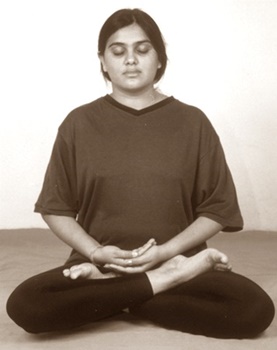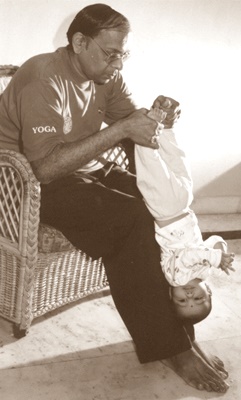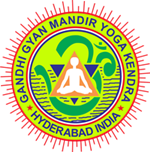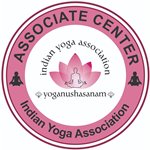- What is Yoga?
- The Importance of Yoga-shashtra or the Science of Yoga
- Advantages of Yoga Practice
- General Rules and Regulations of Yoga
- Chitta Vikshepa – Interruptions for Yoga Practice

1. What is Yoga?
There are a number of meanings in use for the word Yoga such as union, fortune, contribution, meeting, relationship, meditation, addition etc.
The effort made to unite Atma with Paramatma, i.e. the soul with the Supreme soul (God) is called meditation. Concentration is the base for meditation. One should have faith and belief in meditation, which is an important component in the science of Yoga. The answer for the question why one should meditate? Is for uniting the soul with the Supreme soul or realizing the self (soul)? Is it possible? Yes, it is, provided one conquers the inner enemies of the self like lust, anger, greed, passion, conceit, proud etc. The father of modern Yoga-shashtra Patanjali Maharshi, defines Yoga as ‘Yogaschitta Vrutti Nirodhaha’ i.e. Yoga is controlling the nature of the mind.
2. The Importance of Yoga-shashtra or the Science of Yoga:
Yoga education has started with the birth of the first human on this Earth. Yoga is a way of life. Yoga not only provides health, vigour, brightness and alertness to the body and mind, it also fills the life with satisfaction, happiness and pleasure. What is the use of any wealth if health is not well?
It is said that Parameshwar (God) is the first preacher of Yoga education. Many Yogis, Munis, Rishis, Maharishis, Bramharishis have blessed the world with Yoga education. Maharishi Patanjali had probed into the then existing Yoga techniques, practiced them and with his own experiences he manuscripted the “Yoga Darshan” the great science of Yoga.
Raja Yoga, Bhakti Yoga, Japa Yoga, Gyan Yoga, Karma Yoga, Hath Yoga etc. all these are related to the science of Yoga.
Lord Krishna, the Geetacharya preached that one should do his duty leaving the result to the God.
Swamy Matsyaendranath and Gorakhnath have proposed Hath Yoga. That is Kundalini – serpant power can be energized with the co-ordination of Eda…., Pingala……Sushumna – Nadis. Such power awakens the hidden divine power in the man making the life worth living. During the course of time Tantrikas,Kapalikas………..entered the Yoga field and tried to mislead the Yoga education for their personal benefits declaring that the state of pleasure, that men and women derive from sexual acts as the Yoga Samadhi. But the society did neither accepted it nor appreciated this theory of Kapalikas. Yoga Shastra acquired spiritual importance in India and is flourishing till date.
Today Yoga has received the appreciation of modern science as well. Many intellectuals, Doctors and other experts have entered the field of Yoga education and are contributing a lot in developing Yoga therapy or Yoga treatment. They have served and are serving for the physical and psychological development of mankind.
3. Advantages of Yoga Practice:
1. Yoga practice reduces tension, stress, anxiety, weakness, helplessness, fear, negative thoughts etc. which are increasing day by day in this mechanical human life.
2. Man can prove his life worth living by developing his Self physically and psychologically that contribute for the development of spiritual instinct in him.
3. Man can acquire peace and tranquility as Yoga practice reduces the negative tendencies like jealousy, ego, anger etc. in him.
4. It treats the prolonged diseases or deficiencies like diabetes, asthma, heart problems, pains, sprains, indigestion etc. and makes the body active and good looking.
5. As soon as one is habituated for Yoga practice, there would be number of changes in his routine activities, habits, thoughts, food habits, behavior etc. Tamsik…….. and Rajasik tendencies
are reduced and Satvik tendencies creep in. Such Yoga practitioners contribute a lot as best responsible citizens to the nation and also to the entire mankind (Sarvesham Mangalam Bhavatu, a stanza of Yoga prayer).
6. Yoga practice equips the practitioner with devotion, concentration and alertness in every activity that he does. He also discharges his responsibilities with love and dedication thereby gets respect and honor at his work.
7. If women practice Yoga, they gain not only good health but also improvement in their complexion and beauty. They can teach their children good discipline and train them to become responsible citizens.
4. General Rules and Regulations of Yoga:
a. Do’s
1. “Early to bed and early to rise makes man healthy, wealthy and wise” is a universal saying. The Yoga practitioner should go to bed early, have sound sleep and get up early in the morning, attend to the calls of nature, wash the mouth and teeth thoroughly, take bath and start Yoga in fasting (not eating anything). It can also be practiced 1 hour after liquid diet, 3 hours after refreshments or 5 hours after full meals.
2. One could practice Yoga even before bath but after practice he should wait for some time and then take bath.
3. Yoga should be practiced on a levelled floor in a room where doors and windows are kept open for air and light.
4. It is helpful in many ways to practice Yoga in a place, where morning tender sunrays fall.
5. One should not practice Yoga directly on ground, on cement or mortar floor or on stoned floor. He should spread a carpet, a blanket or a clean cloth, sit on it and start Yoga practice.
6. Men can practice Yoga on briefs or shorts or half pants in the house. Women can wear minimum clothing. When they practice in open places, they must wear loose clothing. Better if they wear a Salwar-Kameez or Track suit.
7. One should practice Yoga calmly without any haste or exhaustion. If one is tired he should rest for a while in a comfortable posture.
8. One should try to practice Yoga everyday regularly, preferably at the same time.
9. While practicing Yoga, one should concentrate on the Yoga alone and try to keep away the other thoughts.
10. During the practice of asanas, the dirt of the internal organs of the body is directed towards the urinary bladder, so soon after completing Yoga, one should pass out the urine.
11. During Yoga practice, if any one feels to attend the calls of nature, he must go and attend to them immediately. One should not hold them forcefully for long time. One should also not try to suppress sneezing, cough etc. If one feels thirsty, can drink a little water.
12. If one sweats during Yoga practice, should slowly wipe it out either by a cloth or with the palms. It is better if it dries up automatically in the air.
b. Don’t’s
1. Women should refrain from Yoga practice during their menstrual period or pregnancy or any such other case. They can practice Micro Yoga and meditation.
2. During illness, after operations, when there is a bandage either for sprains or fractures, one should refrain from Yoga practice. They can resume Yoga after consulting the physicians /
experts.
3. Children below 8 years of age should not be forced to practice Yoga. But they can perform as a play, watching elders.
4. One should not practice Yoga in uncleaned or smoky places and in areas with foul smell.
5. Yoga should not be practiced in stormy winds.
6. One should not initiate Yoga by himself. It is always better to consult Yoga experts before starting the practice of Yoga.
5. Chitta Vikshepa – Interruptions for Yoga Practice:
Patanjali Maharishi, while describing the interruptions or hindrances for Yoga practice in his “Yoga Darshan” says “Vyadhistyana Samshaya Pramadalasyavirati Bhranti darshanalabdh Bhoomikatva Anavasthitatvani Chitta Vikshepah Te-antaraya”. i.e., we have to overcome the nine hindrances. These are also called “Yogamalas”. They are:
1. Vyadhi: The diseases and deficiencies that develop in the body.
2. Styan: Lack of required abilities for Yoga practice.
3. Samshay: Doubts and misapprehensions about Yoga practice.
4. Pramaad: Unwillingness to follow Rules and Regulations.
5. Alasya: Not attempting Yoga practice due to tiredness and carelessness or lethargy.
6. Avirati: Developing disinterest in Yoga, being busy in other activities.
7. Bhranti darshan: Mis-conceptions about the details of Yoga practice.
8. Alabdha Bhoomikatva: Thinking or concentration not being developed to the expected level inspite of practicing Yoga.
9. Anavasthi Tatva: Inspite of reaching a state of concentration, it could not be retained.

![]()
If a practitioner overcomes the above interruptions, he could easily enjoy all the fruits or advantages of Yoga practice.
![]()

